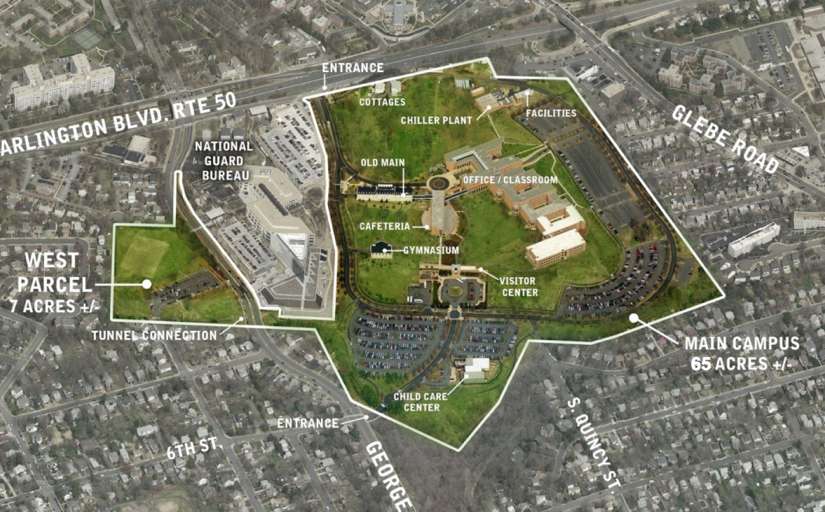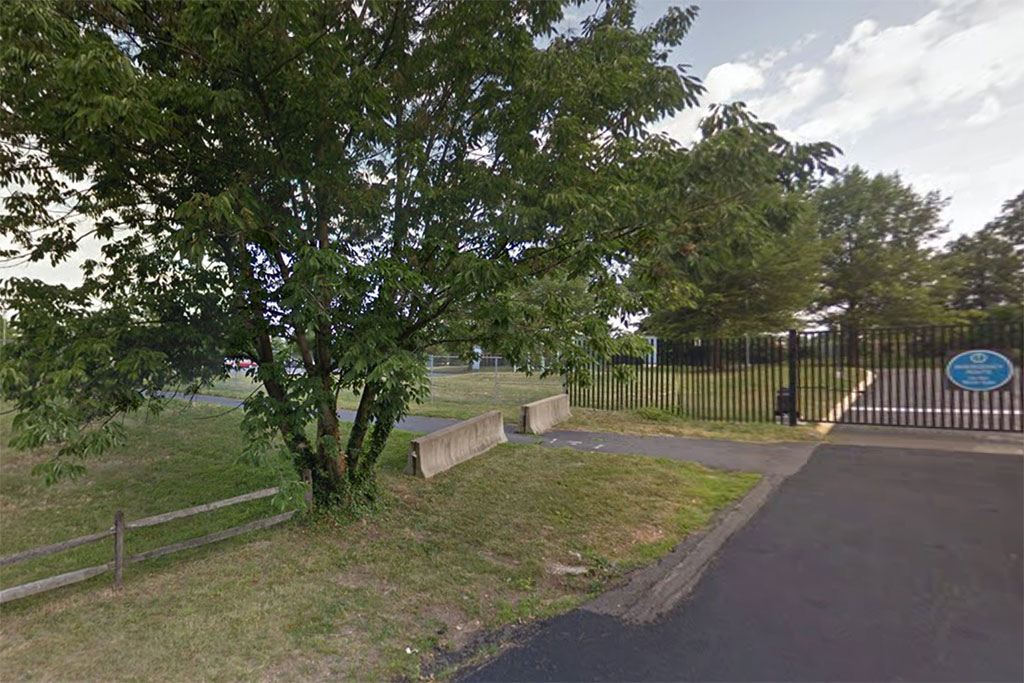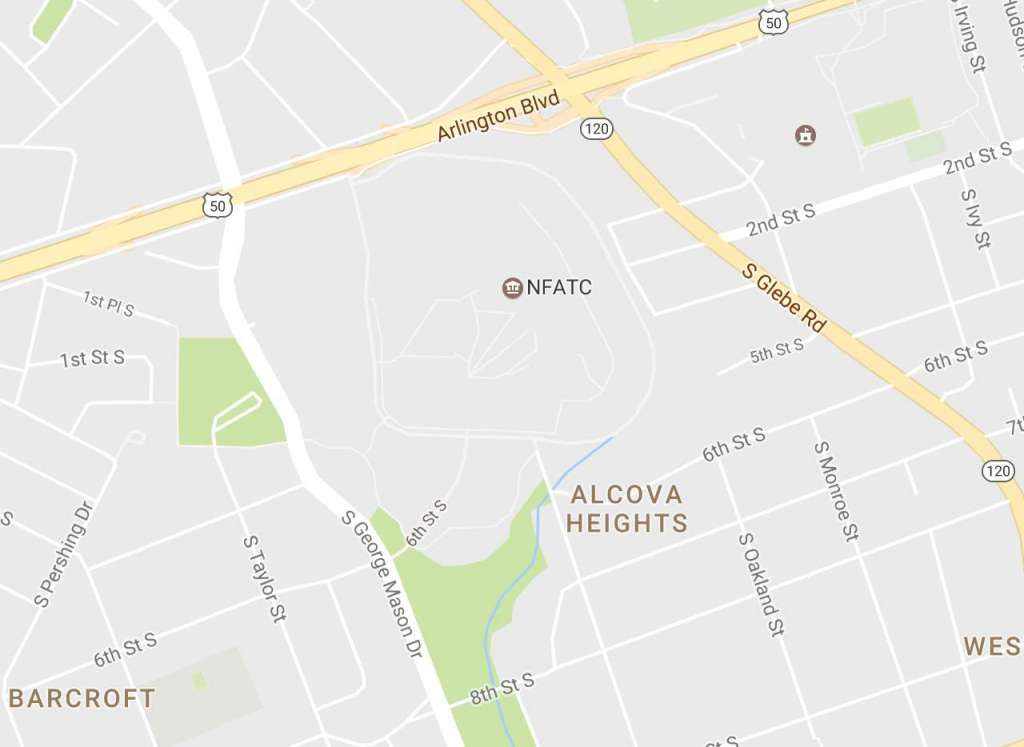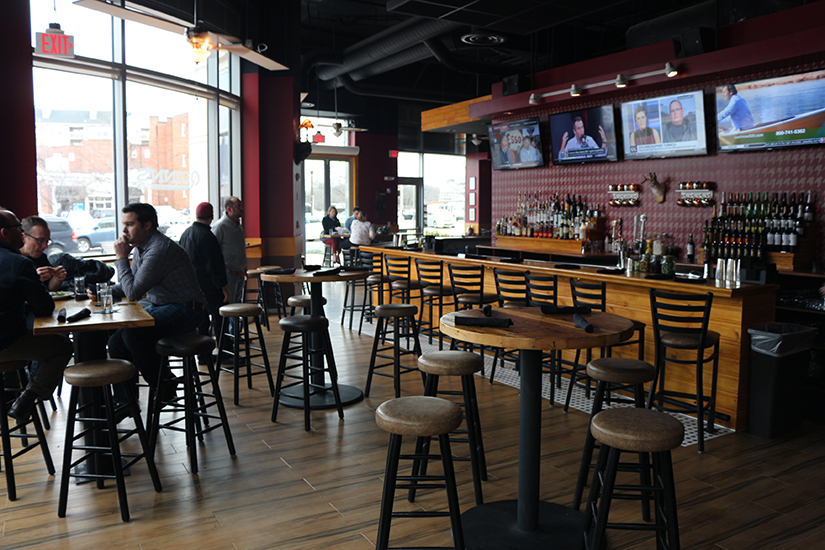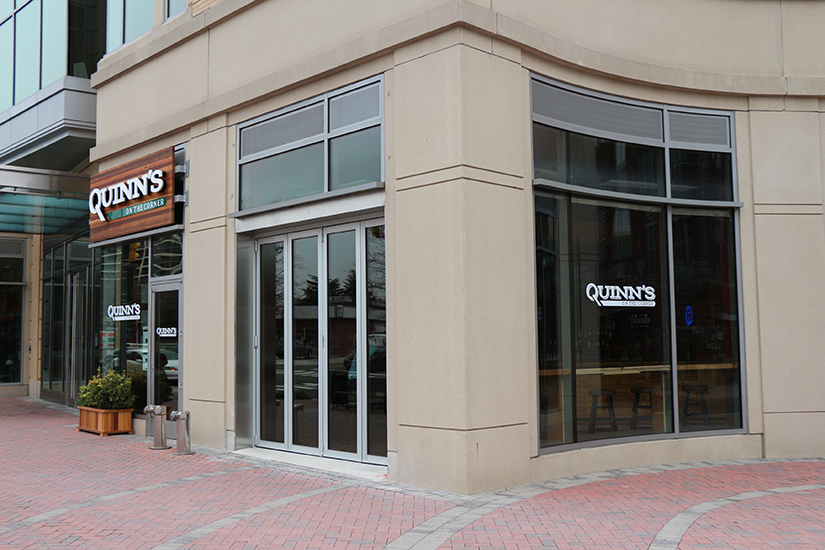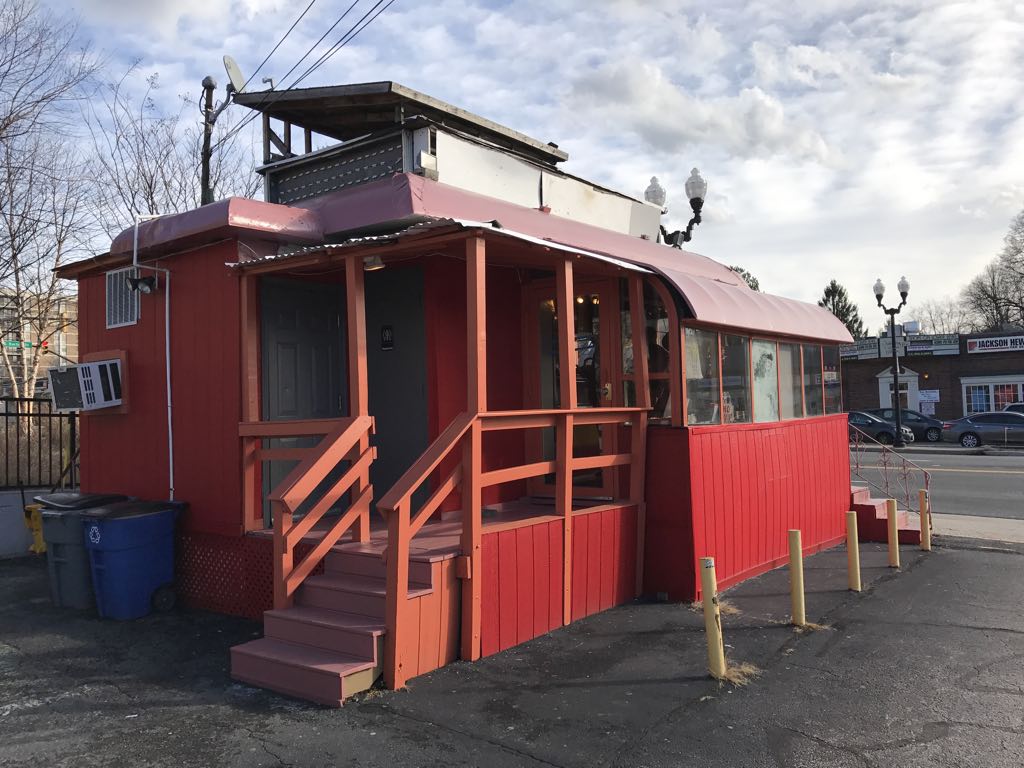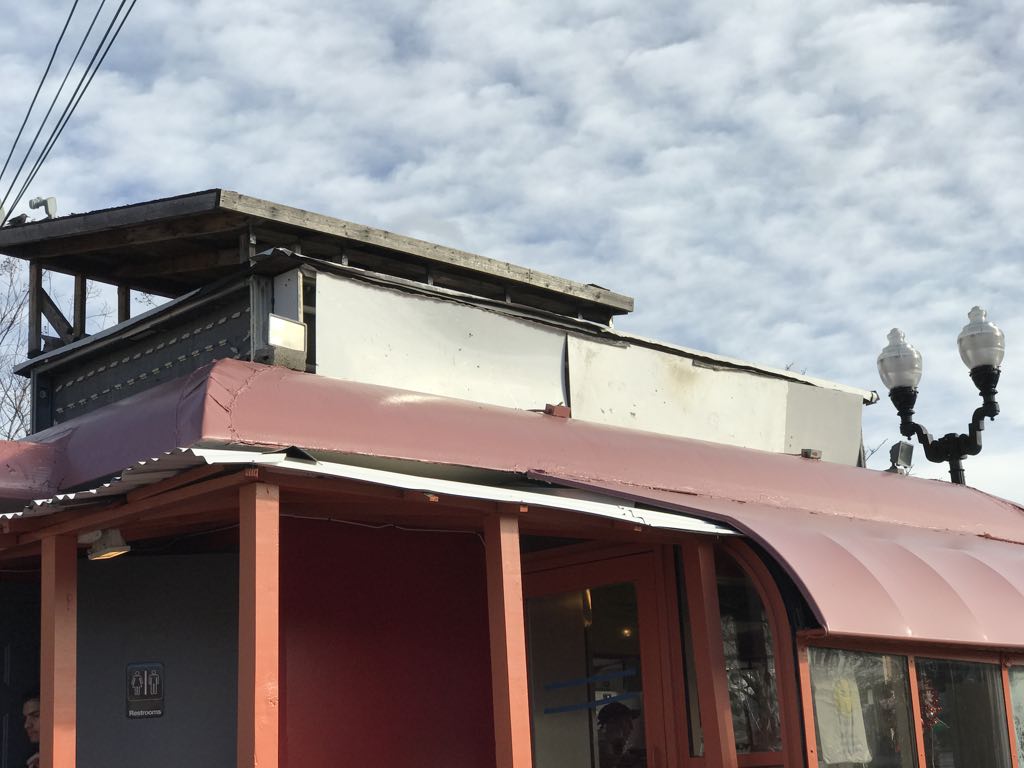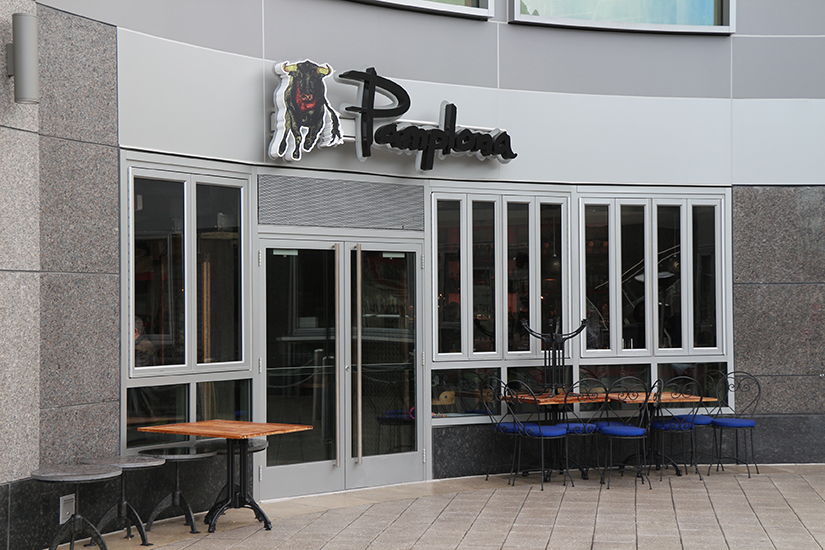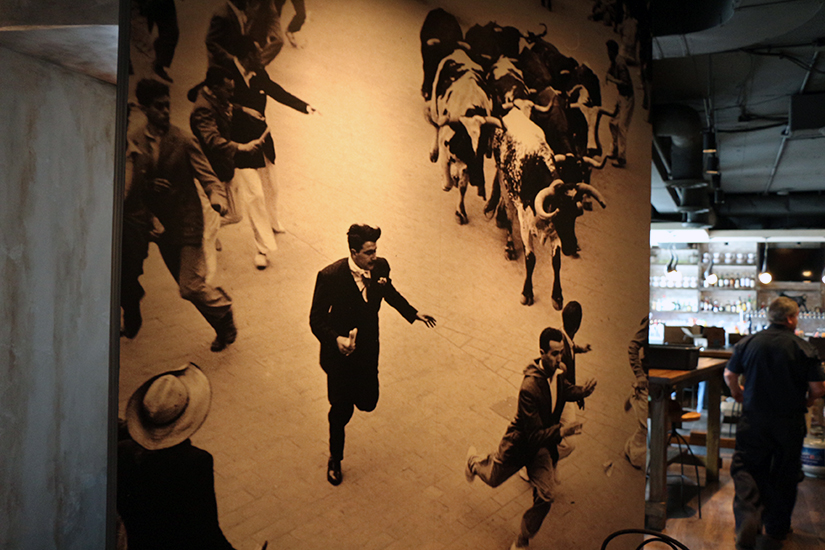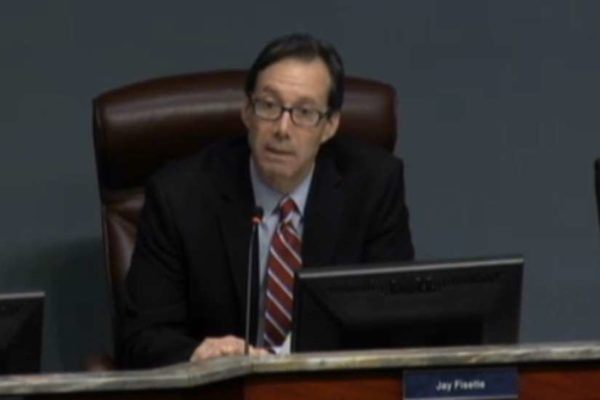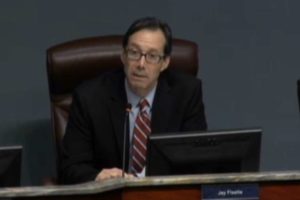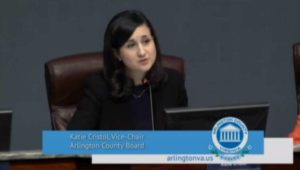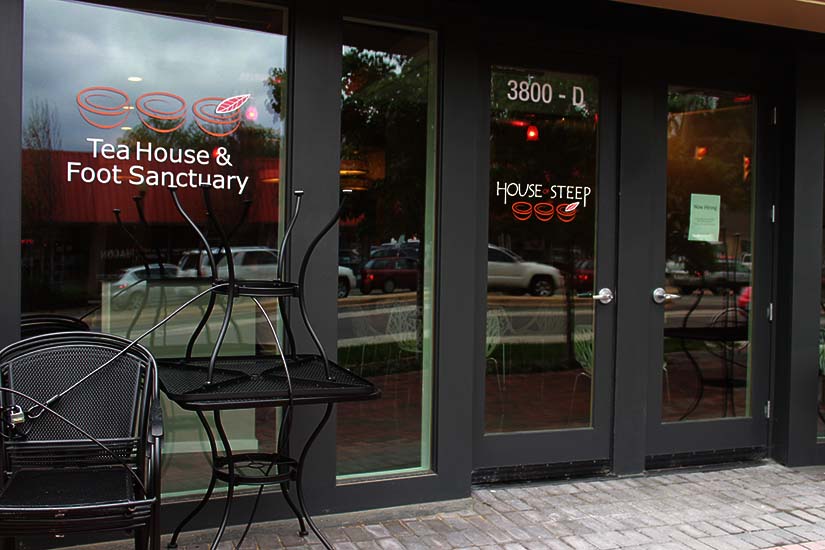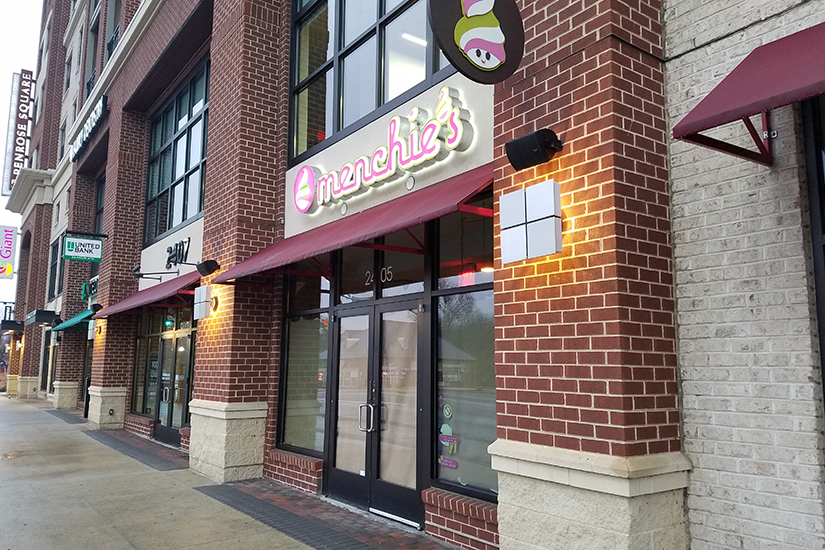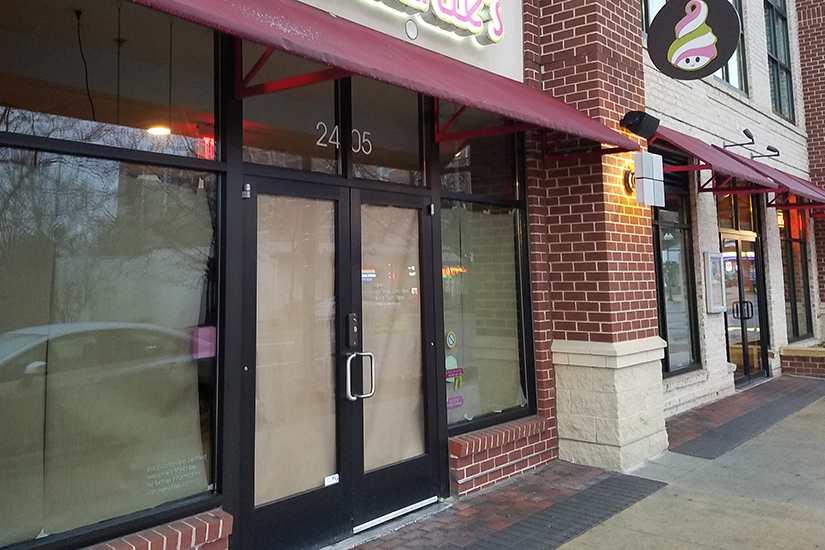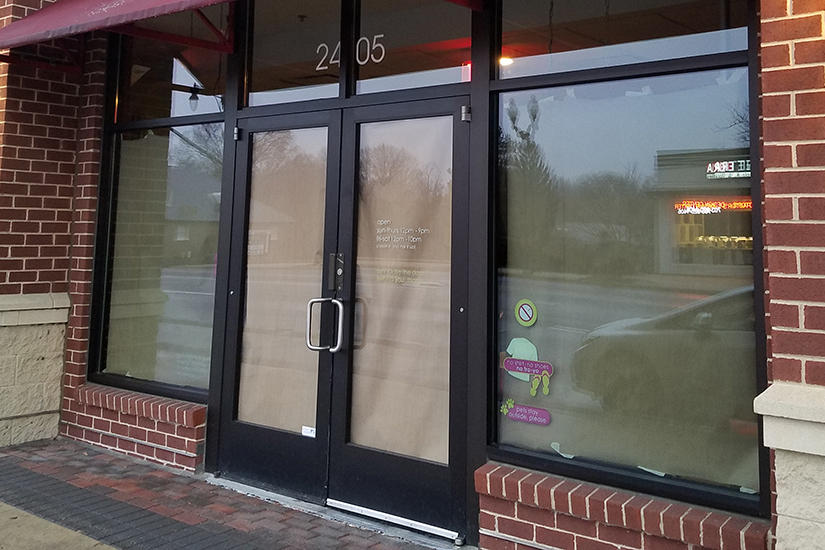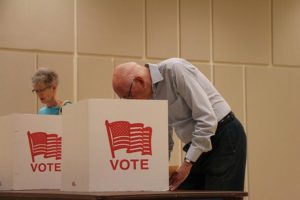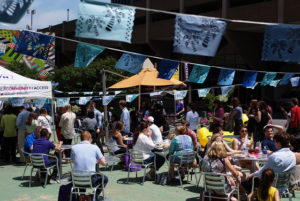More than 130 people who live in and around Alcova Heights have signed a petition to save a walking trail from the proposed expansion of a nearby federal training facility.
The State Department’s National Foreign Affairs Training Center, which trains members of the nation’s foreign service, is seeking to expand its campus in Arlington to include a new training and classroom facility, childcare center and other buildings.
As planned, the expansion would extend the perimeter fence farther south, and, in the process, swallow up a pedestrian path that connects George Mason Drive and S. Quincy Street.
According to an assessment from the U.S. General Services Administration (GSA), the agency in charge of managing federal buildings and facilities, the effects on walkability in the neighborhood would not be significant.
“While input from the public scoping process showed a concern to keep the pedestrian trail open to the public, the [expansion’s] impact on neighborhood connectivity would be minor,” the GSA wrote. “This determination is based on the limited number of individuals using the NFATC pedestrian trail, as well as the extensive walking network of sidewalks adjacent to campus that offer an alternative to the pedestrian trail.”
But neighbors and other locals who use the path disagree with the government’s view.
Alcova Heights resident Danielle Arigoni, who yesterday launched a petition urging the government to reconsider eliminating the path, said the assessment is “outrageous.”
“The fact that the existing path is being eliminated is insulting,” Arigoni told ARLnow.com.
Eliminating the path would deprive pedestrians of a safe and easy way to walk from one part of the neighborhood to the other, Arigoni said.
“The NFATC site is so enormous… that it bifurcates Alcova Heights,” she said. Other than the pedestrian path “there are no east-west pathways that are viable alternatives.”
Others, like local resident Beth Smith, called the path a “great asset” for the surrounding neighborhood.
“I walk that way every day to pick my boys up and we walk back from school,” she said. “If they take this away and they don’t offer us an alternative, we’re either going to walk along Route 50, which is really frightening, or have to go down to 8th Street, which is really not convenient.”
One possible solution, said neighbor Rodrigo Abela, is limit the perimeter expansion to 10-15 feet instead of the planned 20 feet.
“Connectivity does not require more than 10-15 feet to allow people that move along the fence line, and looking at the site plan, it is easily achievable without compromising the safety of the compound,” he said.
Arigoni’s petition urges the GSA to, among other requests, “build a perimeter trail connecting 3rd St. S to the existing trail at Quincy at 6th St. S,” a suggestion that would require a permanent public access easement. In theory, Arigoni writes, Arlington County could then build a perimeter trail connecting 3rd St. S to the existing trail at Quincy at 6th St. S.
Regardless of the solution, she said she simply wants to the GSA to take stock of the community’s needs.
“I think the point is that we want to be good neighbors with GSA and with the feds,” she said. “I understand the need for these kind of facilities, but it shouldn’t come at the expense of safe bike and pedestrian access in our neighborhood.”
Alcova Heights residents interested in submitting public comments can do so on the GSA website through Jan. 15.


